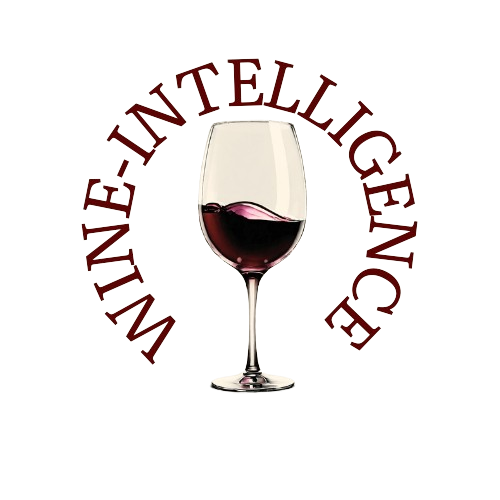A groundbreaking report by the Pesticides Action Network (PAN Europe) and other environmental NGOs has sparked controversy and concern about the presence of per- and polyfluoroalkyl substances (PFAS) in wines across the European Union.
These substances, known as "forever chemicals" due to their persistence in the environment and the human body, have raised alarming questions about contamination levels in both organic and conventional wines. The report, based on the analysis of 49 wines from various countries, highlights startling findings that may have significant implications for the wine industry and consumer safety.
What Are PFAS and Why Are They a Concern?
PFAS, including a particular substance called trifluoroacetic acid (TFA), have been used in many consumer products, including pesticides, for their water- and stain-repellent properties. These chemicals are notorious for their environmental persistence and resistance to breakdown, earning them the nickname “forever chemicals.” Over time, they accumulate in water, soil, and wildlife, with potential human health risks linked to their exposure.
TFA, a compound within the PFAS family, is of particular concern in this context. The report discovered that some wines tested across Europe contained TFA levels up to 100 times higher than the European Union's drinking water threshold. This stark revelation adds wine to a growing list of everyday products contaminated by PFAS substances, intensifying calls for stricter regulations.
Key Findings from the Report
The report analyzed 49 different wines from EU countries, including organic and conventional varieties. The findings revealed an alarming trend: while older wines (pre-1988) showed no detectable PFAS residues, modern wines displayed a significant increase in TFA levels since 2010. This sharp rise correlates with the growing use of PFAS-based pesticides in agriculture. It’s clear from the study that TFA contamination in wine has become a modern phenomenon, pointing to the widespread application of these chemicals in vineyards.
Austria: A Case in Point
Austria, where nearly a quarter of vineyards use organic methods, has drawn particular attention in this study. Out of the 49 wines analyzed, 18 Austrian bottles were found to contain high concentrations of TFA, which led to a strong reaction from Austria’s Wine Growers Association. They dismissed the findings as “not meaningful,” arguing that such substances can be detected in many products due to environmental contamination, not necessarily through pesticide use.
The Austrian Wine Growers Association raised doubts about the representativeness of the sample sizes and questioned whether the study accurately reflected broader trends in the wine industry. They argue that environmental factors, rather than farming practices, may contribute to the presence of PFAS in wines.
The Debate: Organic vs. Conventional Wines
Another significant aspect of the report’s findings is that there was no notable difference in TFA contamination between organic and conventional wines. This suggests that even wines produced without synthetic pesticides may still be susceptible to PFAS contamination, possibly due to environmental factors or the persistence of these chemicals in the soil.
The Committee of Wine Companies (CEEV) has also questioned the validity of the study, pointing out that the sample tested did not account for factors such as grape variety, wine age, or the balance of countries represented in the research. They argue that the link between PFAS pesticides and wine contamination is not as direct as the report suggests.
The Growing Call for Regulation
The findings have prompted significant debate among European policymakers. Some Members of the European Parliament (MEPs) are urging the European Commission to take more decisive action. Last month, 50 MEPs signed a letter calling for a ban on PFAS pesticides, citing the contamination found in food products, including wine. In a recent environment committee session, Green MEPs confronted the European Commission with the findings, arguing that wine drinkers are consuming more PFAS through their glass of wine than is allowed in drinking water. MEPs like Jutta Paulus and Martin Häusling have called for the removal of PFAS pesticides from the market, emphasizing that safer alternatives exist.
However, the European Commission’s response has been less definitive. Officials noted that member states have resisted calls to completely stop renewing certain PFAS pesticide approvals. While two substances have seen their approvals withdrawn, the larger issue remains unresolved.
What Does This Mean for the Wine Industry?
The report has put the wine industry under scrutiny, raising important questions about pesticide regulations, environmental responsibility, and consumer safety. As public awareness of the issue grows, wine producers may face increasing pressure to adopt more stringent measures to ensure their products are free from harmful chemicals.
The wine industry must now grapple with how to balance modern agricultural practices with environmental health and safety. The findings also highlight the need for greater transparency in the industry, with producers potentially facing increased demand for eco-friendly and PFAS-free wines.
In the coming years, we may see stronger regulations from both EU authorities and national governments, leading to cleaner production methods and stricter testing for harmful chemicals in wine.
Conclusion: A Wake-Up Call for the Wine Industry
The discovery of PFAS contamination in wines is a significant wake-up call for both the wine industry and consumers. While the debate continues over the exact causes and the validity of the report, it’s clear that the growing use of PFAS chemicals in agriculture is a key concern. As awareness increases, wine drinkers, producers, and policymakers must work together to address this pressing issue and ensure that future generations can enjoy wine that is not only delicious but also free from harmful chemicals.
Source: EurActiv

